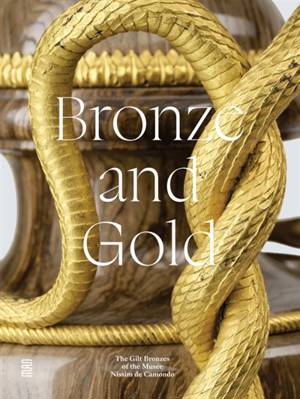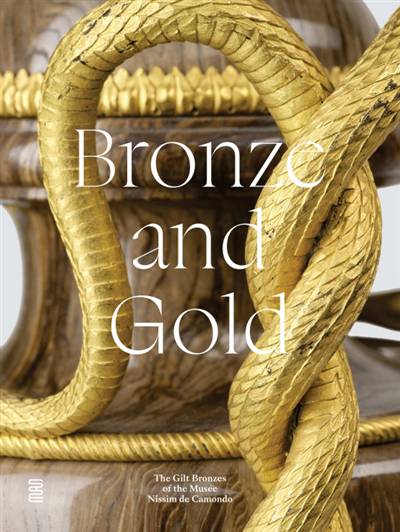
- Afhalen na 1 uur in een winkel met voorraad
- Gratis thuislevering in België vanaf € 30
- Ruim aanbod met 7 miljoen producten
- Afhalen na 1 uur in een winkel met voorraad
- Gratis thuislevering in België vanaf € 30
- Ruim aanbod met 7 miljoen producten
Zoeken
Bronze and Gold
The Gilt Bronzes from the Musée Nissim de Camondo
Anne Forray-Carlier, Sylvie Legrand-Rossi, Béatrice Quette
Hardcover | Engels
€ 48,95
+ 97 punten
Omschrijving
Created in 1936, following the bequest of Count Moïse de Camondo to the French State in memory of his son Nissim, who died for France in 1917, the Musée Nissim de Camondo houses a rich collection of 18th-century art objects. Reflecting the donor's taste for this period of French art, the collection includes a significant number of pieces of furniture and objects embellished with gilded bronze ornaments. Gathered with incredible foresight by Moïse de Camondo between 1890 and 1935, these gilded bronzes reflect the evolution of styles during the 18th century, from the fantasies of rocaille, the severity of the return to the antique model, to the delicacy of the Louis XVI style. This catalog presents a selection of 30 furniture bronzes, all masterpieces. Signed Osmond, attributed to Jean-Louis Prieur, François Rémond or Jean-Noël Turpin, they testify to the expertise of Parisian gilders in the second half of the 18th century, as well as to their collaboration with other trades - draftsmen, sculptors, founders, goldsmiths and watchmakers. The gilded bronzes in the Musée Nissim de Camondo offer a highly varied typology, bearing witness to their diverse uses and fully participating in the project of "reconstituting an 18th-century artistic residence" so dear to the Count de Camondo.
Specificaties
Betrokkenen
- Auteur(s):
- Vertaler(s):
- Uitgeverij:
Inhoud
- Aantal bladzijden:
- 160
- Taal:
- Engels
Eigenschappen
- Productcode (EAN):
- 9782383140238
- Verschijningsdatum:
- 27/03/2024
- Uitvoering:
- Hardcover
- Formaat:
- Genaaid
- Afmetingen:
- 9 mm x 11 mm
- Gewicht:
- 818 g

Alleen bij Standaard Boekhandel
+ 97 punten op je klantenkaart van Standaard Boekhandel
Beoordelingen
We publiceren alleen reviews die voldoen aan de voorwaarden voor reviews. Bekijk onze voorwaarden voor reviews.








